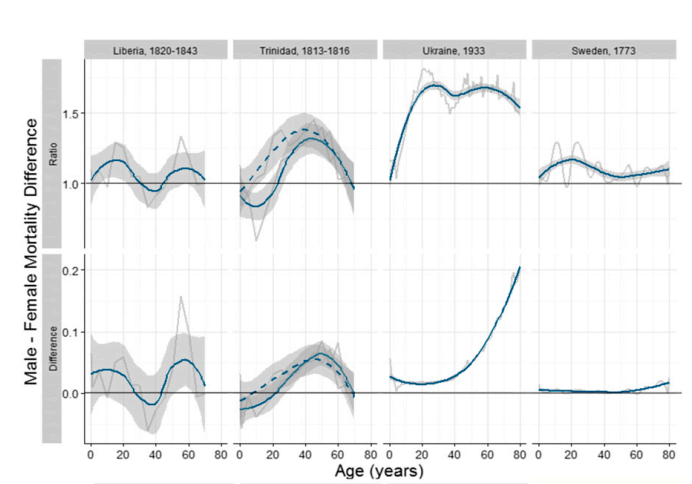
Current research shows that women live longer than men. And a recent study found baby girls are more likely to survive in famine, epidemics and other unfortunate circumstances, why this happened? The research found that advantage of women may have existed very early.
Researchers believe that despite the small differences in gender behavior in infancy, the fact that women also have the advantage in infancy suggests that biology, at least in part, dominates this longevity of women.
“Our results bring some light to reveal the gender difference in survival,” said Virginia Zarulli of South Denmark University and James Vaupel of Duke University.
They studied data for over 250 years on people under the age of 20 years who died in a vicious environment. This the data including the period of famine in the early 18th century on Trinidad and the United States, the period of measles of the 18th, 19th and 20th centuries on Sweden, Ireland and Ukraine and the period of measles of the 18th century on Iceland.
According to the results of this study, the average life expectancy of women is still 6 months to 4 years longer than men, despite the high overall mortality rate.
By grouping data by age, researchers found that the survival advantage for most women came from infancy period, as female newborn babies more likely to survive than male newborn babies.

According to a Duke University news conference, the early survival advantage of women may be due to epigenetics or hormones and other factors. For example, studies have shown that estrogen can enhance the body’s ability to fight infectious diseases.
A growing body of research on sex differences in mortality and immune response among humans and other mammals supports the fundamentally biological foundations of sex differences in human mortality. Biological factors include hormonal and chromosomal genetic differences. Sex hormones seem to play a key role: estrogens have anti-inflammatory, vasoprotective effects, whereas testosterone seems to increase the mortality risk for certain diseases, although the evidence on this point is mixed. Moreover, while estrogens enhance immune defenses, testosterone and progesterone may have immunosuppressive effects. The presence of two X-chromosomes may pose a further advantage with respect to specific X-linked diseases (e.g., hemophilia A) due to an amelioration of harmful gene mutations through nonmutated alleles on the other X-chromosome. The possibility of having two different alleles on the two X-chromosomes further contributes to the physiological diversity that can be advantageous when encountering new immune challenges.
Research has also provided evidence for an apparent female advantage in immune protection among humans: The incidence of many bacterial, viral, parasitic, and fungal infectious diseases (e.g., leptospirosis, chistosomiasis, brucellosis, rabies, leishmaniasis, pulmonary tuberculosis, hepatitis A, meningococcal and pneumococcal infections, and seasonal influenza) is substantially higher in men than in premenopausal women. This suggests that progesterone and testosterone have mainly immunosuppressive effects, whereas estrogens enhance immune defenses and act as an antioxidant. Moreover, autoimmune diseases are more prevalent in women than in men, as is a stronger immune response to vaccinations. These findings led researchers to conclude that low male immunocompetence contributes to sex differences in mortality, but the mechanisms through which sex hormones affect immune responses in humans have not been fully elucidated.
Additionally, behavioral factors have been identified as important determinants of the male-female survival difference in contemporary populations. The high preponderance of risk-taking behaviors among men contributes substantially to the sex gap in life expectancy. Men consume tobacco, alcohol, and psychoactive substances in greater quantities, drive less safely and eat less salubriously than women do; this results in elevated risks of cardiovascular diseases, lung cancer, liver cirrhosis, and accident fatalities. In high-income countries, cigarette smoking has been identified as the largest factor contributing to the mortality differential. However, although behaviors are important factors, they cannot fully explain the sex difference in survival, as suggested by the fact that some female advantage is found among nonsmokers, devout Mormons, and Catholic nuns vs. monks.
Reference
Virginia Zarulli et al. Women live longer than men even during severe famines and epidemics, Proceedings of the National Academy of Sciences (2018). DOI: 10.1073/pnas.1701535115